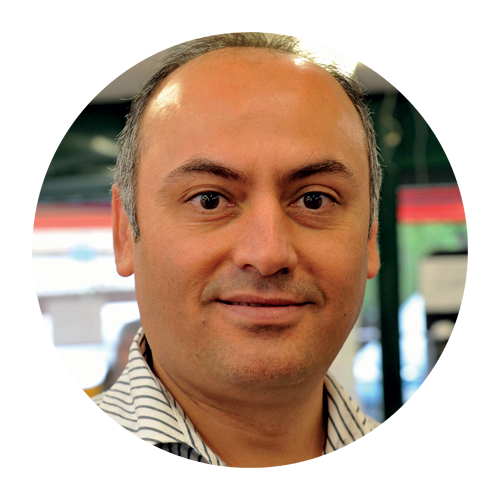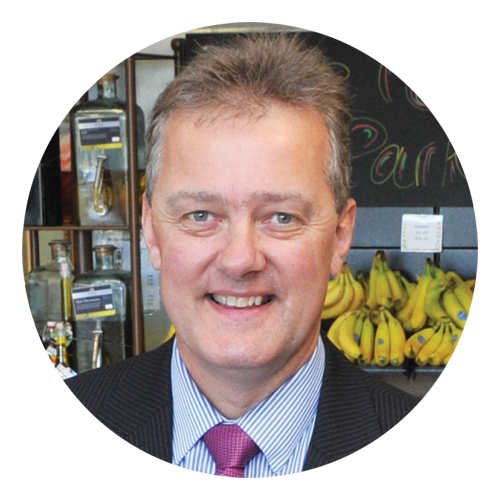Andrew Don asks how wholesalers can make the most of a category that is still expanding, despite political issues and sustainability concerns from the general public
The global bottled water market is predicted to almost double in size to £247bn by 2022, despite environmental concerns about plastic.
This hasn’t stopped the category’s growth, though, with wholesalers having their work cut out to stock the right blend of classics, new entrants and budget labels into this expansive section.
The days of Perrier and Evian being ubiquitous are now long gone, with the category now a crowded one featuring a plethora of competing brands from home and abroad.
The soft drinks industry levy has boosted water’s dynamism with the launch of several variants and functional, health-enhanced products. The levy, which came in a year ago, has also had an impact on the flavoured market.
For example, the likes of Danone’s Volvic relaunched its entire Touch of Fruit original range last summer with half the sugar after 18 months of work on recipe reformulation, while Volvic Infusions is a new organic range using mineral water, organic tea, infusions and natural fruit flavours.
John Letford, sales development controller at Danone Waters, says health continues to be the dominating trend with a majority of shoppers actively reducing their sugar intake.
This is backed up by Gary Black, convenience and wholesale director at Coca-Cola European Partners (CCEP), who says millennials have a greater awareness of health and wellness than ever before.
“As more consumers look to make positive changes to their lifestyles, low- and zero-sugar options, drinking water and staying hydrated have become a bigger priority for many people,” he adds.
Environment
The plastic waste issue has galvanised minds, with CCEP using packaging that contains PlantBottle for its Glacéau Smartwater – a fully recyclable strong plastic bottle made partially from plants.
It is produced using sugar-cane residue instead of petroleum, which Black explains reduces the CO2 emissions and accounts for 30% of the plastic used in the brand’s bottles.
Highland Spring channel marketing manager Nichola Grant claims bottled water has the lowest environmental impact within the soft drinks category, both in terms of carbon and water footprint, making a bottled water offering one of the most environmentally friendly options.
“Every bottle of Highland Spring natural source water is 100% recyclable, meaning that every bottle has a second life. Highland Spring actively encourages consumers to recycle its bottles through positive behaviour change initiatives and re-education to view plastic as a valuable resource with a life beyond its original purpose,” Grant says.
The Scottish firm tested a 100% recycled and recyclable plastic eco bottle in 2018, and it has now been made a permanent option for shoppers. “A successful trial is good news for the industry and a significant step as part of the long-term road map to eliminating plastic waste in the soft drinks sector,” she says.
Grant also acknowledges that a packaging change such as this cannot happen overnight, with more work to be done to source recycled plastic in the quantities and quality needed.
Meanwhile, immediate consumption formats have experienced 4% year-on-year growth, according to Nielsen data, with consumers looking to stay hydrated while on the go. “The Glacéau Smartwater portfolio is the third biggest immediate consumption brand in volume and is worth £43m,” Black says.
He adds that the 600ml PET bottle offers 100ml more water than its nearest competitors and the 850ml sports cap bottle is ideal for people when they’re out and about.
He also notes that flavoured carbonated water has enjoyed impressive growth this year, with the value of Glacéau Smartwater’s sparkling flavoured variants doubling in the past year.
Commoditisation
Ed Woolner, commercial director of Clearly Drinks, warns that commoditisation of the category remains a challenge as the competitive pressure increases among brands. “We recommend a simple ranging strategy with established quality brands that can add value at every level of entry into the category.”
He also suggests that wholesalers continue to keep an eye out for rPET bottles to ensure their water range is sellable but, at the same time, more environmentally friendly, and be willing to try new and different water formats outside of the power brand.
Woolner says functional water, although a fast-growing segment, is still a small segment. He says: “We would recommend listing the strongest brands in the established categories, such as energy and vitamin.”
Plan ahead
Warm weather inevitably sees a surge in bottled water sales. As Highland Spring Group’s Grant points out, July 2018 saw 70 more hours of sunshine compared with the previous July, which led to more than 65 million additional bottled water purchase occasions, according to insight firm Kantar World Panel. “Planning ahead for high volume sales is essential to ensure wholesalers are able to meet customer demand,” she explains.
Promoting bottled water is also key to wholesalers maximising sales. “Merchandising a range according to customer base is a simple, yet effective, method of maximising sales and profits for wholesalers,” explains Grant.
“Whether this is glass bottles for catering, or PET bottles for retail, it’s important for depots to have a range of products and formats to suit customer needs. Stocking still and sparkling bottles next to each other also makes it easier for customers to locate both.”
Britvic’s commercial director, convenience and impulse, Trystan Farnworth, advises that for immediate refreshment, it is important to stock a broad range, including water and water-plus brands, such as Robinsons Refresh’d and Drench.
Retailers can often be in a hurry as they pop in to pick up bits and pieces throughout the day, so group sub-categories together to make it easier for them to find what they are looking for.
Profit
Steven Simpson, national impulse controller at Barr Soft Drinks, says the best way for wholesalers to boost water profits is to listen to customers and understand what they need to supply based on their customer make-up.
“Do they need a larger glass offering, for instance, because they are supplying more on-trade and foodservice customers?” he asks.
“Is their customer base mainly retail and, if so, does a good, better, best principle work with a focus on an entry-level brand or own label, followed by clear steps up in brand and pricing?”
He also suggests to clearly signpost a range in the same way it would be merchandised on a retailer’s fixture.
Retailer viewpoints

“I don’t sell a huge amount of water. I sell Highland Spring, San Pellegrino, Volvic Touch of Fruit Lemon & Lime and Volvic Touch of Fruit Strawberry. I also sell Glacéau Smartwater from Coca-Cola, which is slightly more expensive. We are very happy with the choice we are offered and the pricing.”

“Customers don’t really look at the branding, they just want their water to be cold. No one has ever complained that I don’t have a specific brand of water on sale. We sell Ice Valley from Booker and I just happen to have some Volvic I got cheap from them. Booker offers a big choice and I can definitely always find what I’m after.”

“Water’s pretty important. It’s got a metre display in our chillers. Volvic sells best, especially the bigger sports cap format. Flavoured waters have also started to come into their own. We get excellent support from our wholesaler.”

“Water is huge and, in the summer, more so. From something that was almost a nothing category 25 years ago, it has grown to be really important part of the convenience offer in all sizes of bottles. Sparkling accounts for 5% of the water we sell. We get everything through Spar.”
Supplier viewpoint

“Wholesalers need to focus on core brands and reasons for purchase. They should look to sell flavoured and functional waters alongside still waters as these are a higher-value item.
“They should also look to include bottled water in meal deals and create healthy snack deals to encourage cross-category purchases.
“The category can sometimes feel stale, which is why ranging needs to include brands with personality, functional waters and waters with interesting flavours.
“Wholesalers need to be able to offer bottled water that is price-competitive
while ticking the box for sustainability.”
Product news

Hydration+ is a new low-calorie sparkling water range from Rejuvenation Water with plant-based protein and amino acids, and electrolytes for extra hydration and functional health benefits.

Upstream is a new premium flavoured sparkling water which comes in three flavours – Grapefruit & Bergamot, Lime & Pomegranate and Cucumber & Mint – in a 330ml can.

The Highland Spring brand has made its 100% recycled and recyclable plastic eco bottle
a permanent option for shoppers following a successful trial last year.
Volvic has launched a special-edition Rhubarb flavour to its Touch of Fruit sugar-free range in a 750ml bottle and a 1.5l bottle backed by £2.1m investment across the stable.

Ribena has moved into enhanced and flavoured waters with the launch of Frusion Blackcurrant Water, infused with real fruit and botanicals in Kiwi, Blueberry and Lemon Peel flavours.

Britvic has added citrus to its Drench range, with a Mandarin & Lemon flavour. It combines a juice flavour with crisp spring water and contains no artificial sweeteners.

Strathmore Botanics is a spring water infused with natural botanicals and fruit flavours. It contains zero calories and is available in three different flavours.

Rubicon Spring has launched a new range of 1.5l packs. The sparkling brand has grown 25% in size in the past year. Barr says it bridges the healthiness of water and fruit drinks.
Takeaway points
1. Balance your range – Mix it up at your depot with the bestselling brands, flavours, functional and budget labels to provide the widest choice and encourage uptake.
2. Different formats – Offer a range of different formats in both still and sparkling so customers can cater for a range of demands from on the go, to drink later.
3. Environmental thinking – Cater for those that care about environmental issues and opt for brands that have made the effort to be kinder to the planet.
4. Weather watch – Keep an eye on the weather forecast. You do not want to be caught short when a heat wave hits and there is an increase in demand.
5. Health-conscious consumers – Healthier living is a trend that water taps into, so be sure to highlight those that have functional extras.










